The Earth is a magnificent ball of incredible, intriguing, and interesting masses of land and water wonders. From mountains to seas, oceans, rainforests, gulfs, and others, more terms belong to different types of bodies of water. One of the most common yet undeniably breathtaking freshwater habitats in the world is the lake. For many, lakes might seem like a typical fresh body of water, the same as rivers and streams. Yet, they are marvelous in their own ways and have features and characteristics that are pretty different and unique compared to other bodies of water. Many people may be wondering what attributes define a lake, but to figure that out, we must first break down what a lake is. This article will explore all the unique hallmarks that make a lake stand out from other marine habitats and what animals might be residing in such freshwater ecosystems.
What is a Lake?
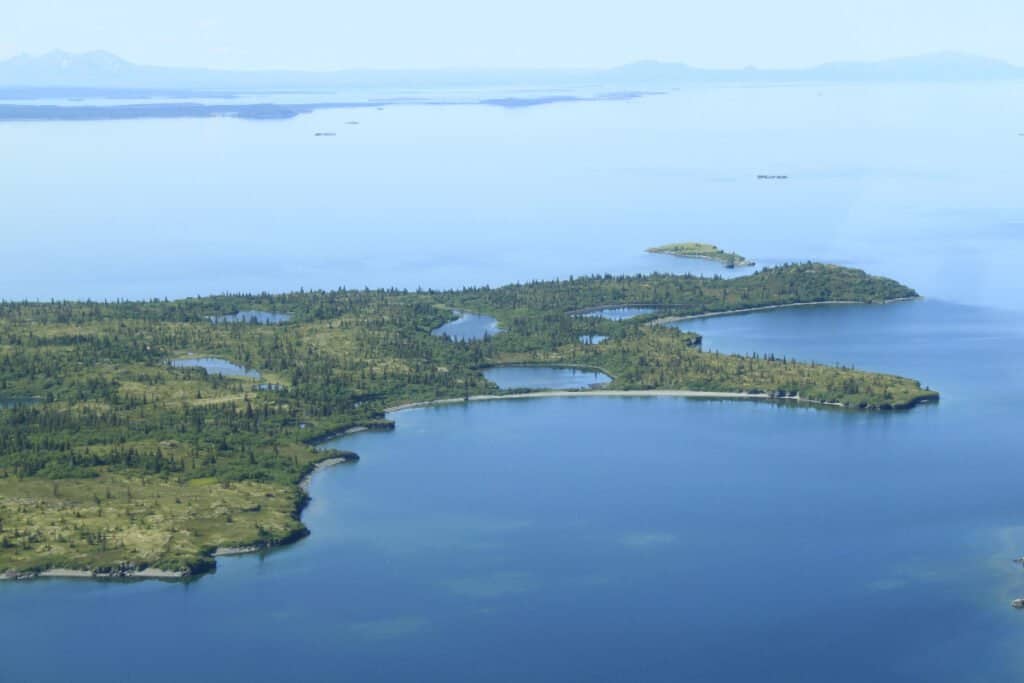
A lake is a large body of water surrounded by land.
©Nessie91/Shutterstock.com
Lakes are bodies of water surrounded by masses of land. Unlike rivers that flow from a water source called a headwater and end up in seas, lakes are standing or slow-moving and do not have fast-moving currents. It may come as a surprise, but there are millions of lakes globally, and most of them create a magnificent view surrounded by mountain ranges or desert plains. You can find lakes on every continent in the world. They are everywhere, from seashores, plains, deserts, and mountainous terrain. Lakes have no fixed definition, and there is no single way to explain them. Yet, they have a list of significant features that can help quickly identify and differentiate them from other bodies of water.
Not all lakes share the same size or depth. Some lakes can be so large you might not even see the other side of the land, while there are lakes that are smaller compared to others. Other small lakes are called ponds, which don’t have much difference from lakes, other than being relatively smaller. Lake Baikal in Russia currently holds the title as the world’s deepest lake, measuring about 5,387 feet or 1.64 kilometers deep. North America’s Great Lakes, including Lake Ontario, Lake Huron, Lake Erie, Lake Superior, and Lake Michigan, measure up to 1,332 feet deep and extend from 193 to 350 miles. Although lakes vary in length, diameter, and depth, they all share the same unique characteristics that set them apart from other bodies of water.
The 5 Key Features that Define a Lake
From space, it is easy to see that the Earth’s composition is two-thirds water. The world is 71% water, and 96.5% of that is made up of oceans. So what about the remaining 3.5% of all the world’s waters? These remaining bodies of water are distributed into various freshwater habitats such as rivers, streams, ponds, wetlands, and lakes. Here, a whole different ecosystem lives. Only about 1.2% of the Earth’s waters can be used as drinking water. The rest are locked up in ice caps, permafrost, or glaciers, while some freshwater are buried underground. There are two types of aquatic biomes in the world – the marine biome and the freshwater biome. All marine biomes have high saltwater content, such as the seas and oceans. Freshwater biomes do not entirely mean they are free of salt, but they have less or low salt content levels than oceanic masses. It is classified into three main types: lakes, rivers, and wetlands. So what attributes help distinguish a lake?
1. Lakes are inland depressions filled with water

All lakes are water-filled depressions on the surface of the earth.
©iStock.com/Wildnerdpix
First things first, let’s talk about how lakes are formed. All lakes are water-filled depressions on the surface of the earth called basins. These basins are formed in multiple ways, such as glacial imprints left through moving glaciers, abandoned parts of rivers, volcanic craters, and more. But the most common way is through changes in plate tectonics. When the Earth’s crust moves and creates faults, these faults form natural basins or land depressions that are filled with water over time through rainfall or flowing streams. Lakes are characterized by an inland basin filled with water or surrounded and enclosed by land. Since they are confined to landmass, they do not flow like rivers and streams.
There are, however, open lakes where the water eventually flows to the sea. Most lakes have outlets below or above the water surface, where water is lost through the surface or underground. On the other hand, closed lakes only lose water through evaporation.
2. Lakes are standing, slow-moving bodies of water
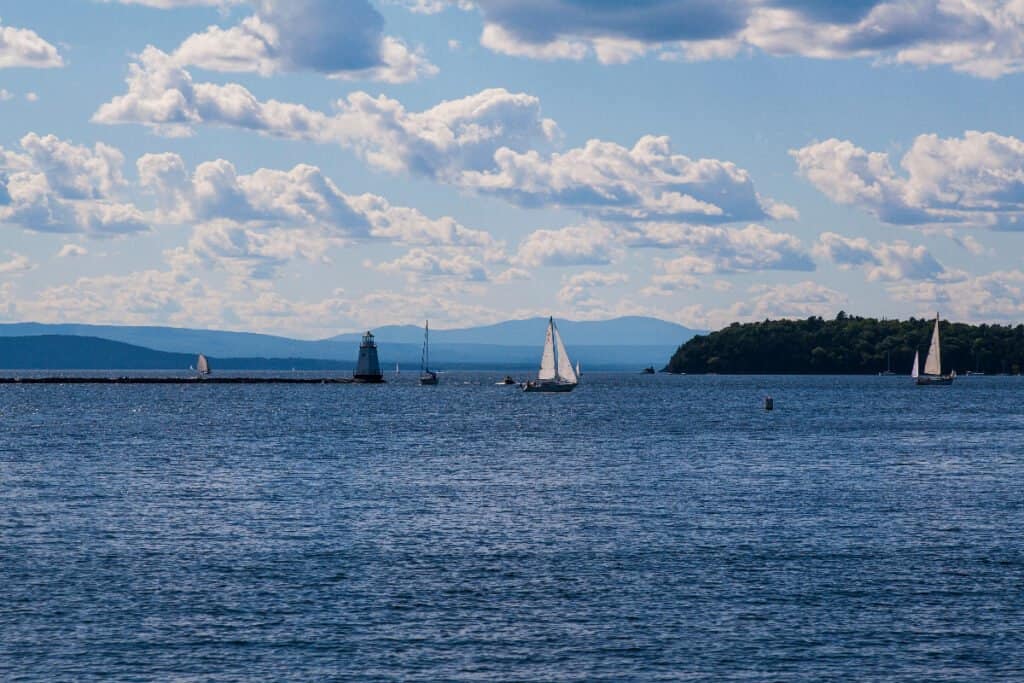
Lakes are characterized by standing, slow-moving waters.
©Mark Castiglia/Shutterstock.com
Perhaps the easiest way to identify a lake is through its water movement. Lakes are considered lentic ecosystems characterized by still, standing, or slow-moving waters. Rivers and streams flow continuously from a water source down to the river’s mouth connecting it to the sea. Unlike rivers, lakes are calm and do not exhibit waves or currents. Lakes also seem motionless on a windless day and only show movements if applied with outside forces like wind. On the other hand, rivers will continue flowing even without the influence of wind.
To the naked eye, it might seem that lakes are stagnant. Scientifically, they are slow-moving, and the main forces that initiate slow water movements on lakes are caused by wind stress, hydraulic gradients, and density gradients. The wind force drives the water to move within the lake.
3. Lakes have vast surface areas
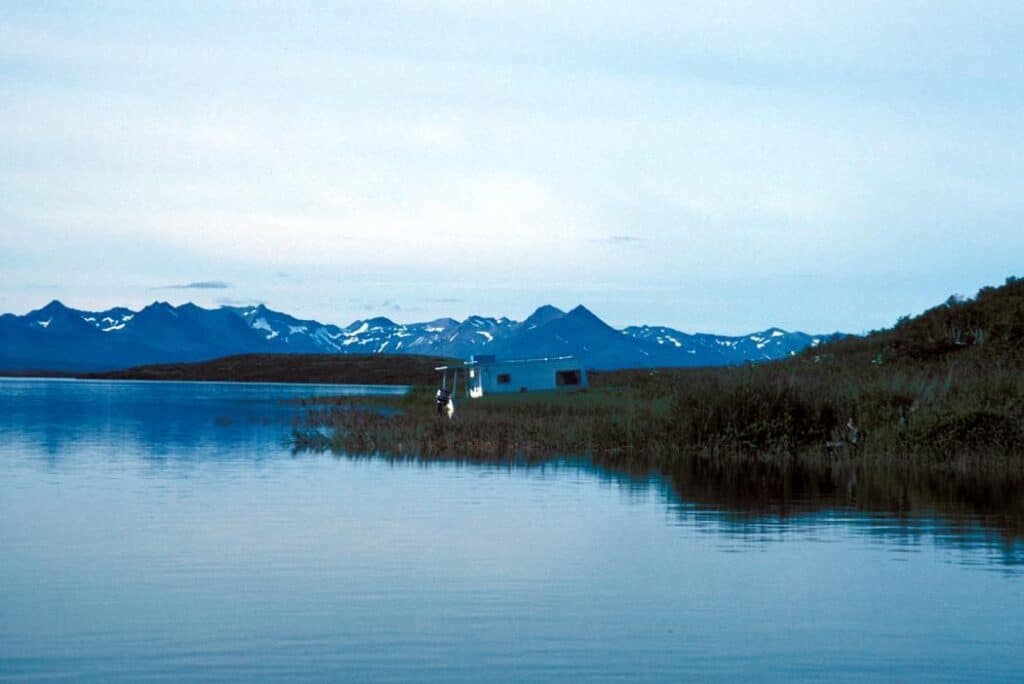
Becharof Lake is a very deep lake in the southern peninsula of Alaska.
©USFWS / pixnio – License
Defining or identifying a lake gets a bit more tricky as you try to identify it by its depth. Lakes have different depth measurements. Some can be kilometers deep, while some can be walked through on foot. But one thing is for sure – lakes have wide surface areas. A lake’s surface diameter helps people recognize it even from afar. All lakes have wide surfaces, and while some can be less than a meter deep, they are still lakes. Lakes average from 2 hectares or 5 acres to 8 hectares or 20 acres wide. New studies have estimated that about 4,200,000 km2 or less than 1% of the Earth’s total surface area is accounted for by lakes. The four Great Lakes in the United States and Canada make up a huge ratio of this entire surface area. Small, slow-moving freshwater habitats may be mistaken as lakes, but they are more commonly classified as ponds.
4. Lakes are homes to complex ecosystems
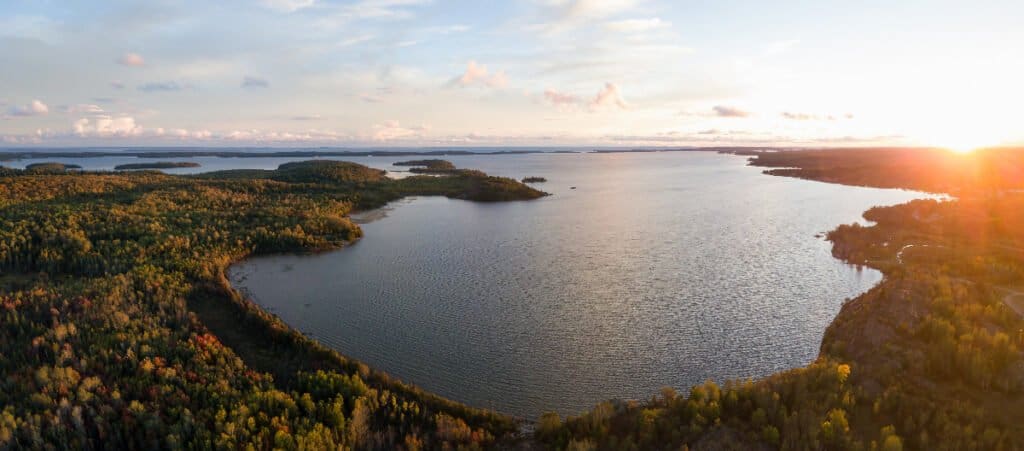
Lakes foster complex ecosystems.
©EB Adventure Photography/Shutterstock.com
The seas and oceans are home to many marine plants and animals, but some aquatic life can only survive in freshwater. One specific and unique characteristic of a lake is its ability to nurture complex ecosystems. Complexity in ecosystems varies as each animal species and plant is diverse. Lakes foster complex ecosystems as the animals and plants living in such habitats have varying needs and environmental conditions.
The types of fish and other marine biodiversity living in a body of water can also help determine if it is a lake or not. Lakes are suitable habitats for freshwater fish and can foster marine animals throughout the year, even in cold seasons with -40°C temperatures. The trout, for instance, is a cold-loving fish that has evolved in deep lake ecosystems. One way to classify lakes is by the fish that live in them. Fishing industries rely on the type or nature of lakes to help them determine which fish they can catch in an ecosystem. For example, lakes that have thick, muddy residues indicate an abundance of catfish.
Here is a list of fish most commonly found in lakes:
Apart from specific kinds of freshwater fish, lakes are also home to many aquatic birds. Birds like flamingos are often seen on wetlands, but most freshwater birds turn to lakes as their forever home. Here is a list of freshwater birds that inhabit lakes:
- Swans
- Ducks
- Geese
- Heron
- Bald eagles
- Kingfishers
- Loons
5. Lakes are mostly freshwater, but some can be a little salty.
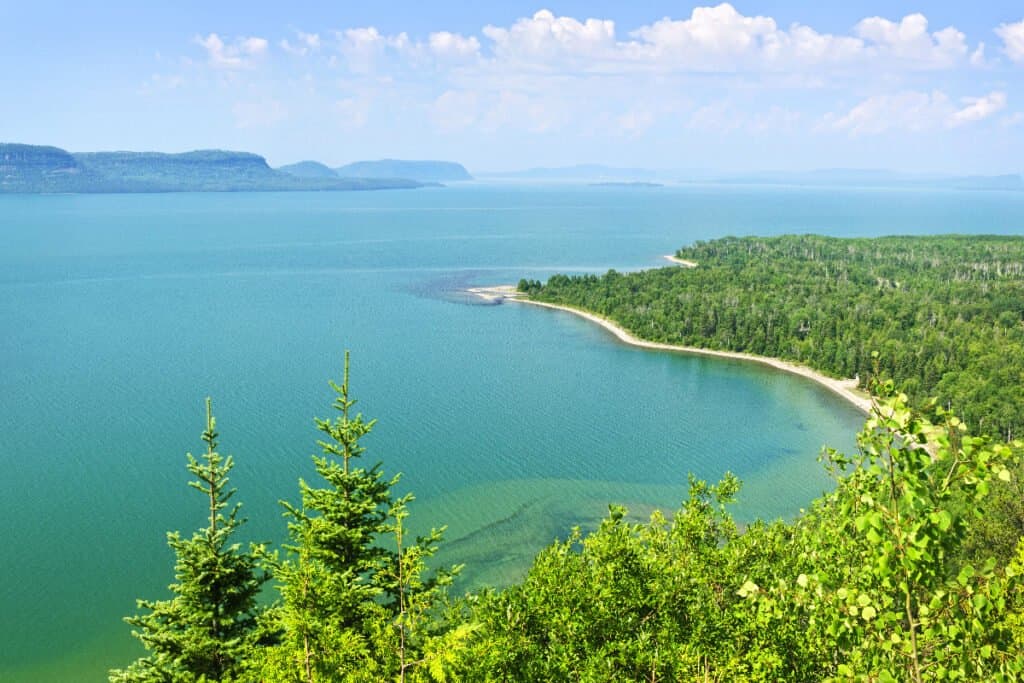
Lake Superior has 10% of the world’s surface freshwater.
©Elena Elisseeva/Shutterstock.com
Most lakes are characterized by freshwater, but it doesn’t mean that they don’t have any salt content. All lakes have at least low saltwater content, but some have salt deposits that are much higher than others. These lakes are called saline or salt lakes. Like the largest lake, the Caspian Sea, saline lakes are landlocked and do not typically connect to the sea. Since they do not flow towards other bodies of water, the salt deposits or salt minerals coming from waters flowing into the lake stay there, therefore increasing the lake’s salinity.
The most popular salt lake is the Dead Sea, which is actually a lake. It got its name from its inability to host aquatic organisms like fish, plants, or even microscopic organisms due to its incredibly salty water. The Dead Sea is eight times saltier than average seawater, and the water is so dense that you can literally float!
Read about the shark-infested lakes on Earth.
The photo featured at the top of this post is © IanSkylake17/Shutterstock.com
FAQs (Frequently Asked Questions)
What is the difference between a river and a lake?
The main difference that separates a river vs. a lake is whether the body of water is persistent or a moving body of water. Lakes are enclosed by land whereas rivers are bordered only by their banks.
Are some lakes different colors?
Some of the most uniquely colored lakes in the world offer a kaleidoscope from chocolate brown to ebony black, blood red, cobalt blue, dark green, sparkling turquoise, and even bright bubble-gum pink!
Thank you for reading! Have some feedback for us? Contact the AZ Animals editorial team.







